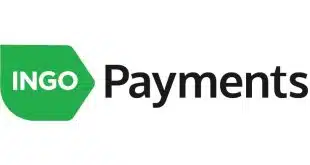A significant minority of financial institutions may not be ready to implement a new application for international automated clearing house payments by next March, even though that's when all banks will have to start supporting it, according to research published this week. The new application, known as International ACH Transactions, or IAT, is intended to make it easier for banks and regulators to identify senders and receivers of payments flowing into and out of the U.S. Specifically, data fields mandated by the new transaction type will allow banks to more readily satisfy anti-money-laundering rules as well as requirements set out by the Office of Foreign Assets Control (OFAC), which bans payments from U.S. banks to certain parties identified as criminal or terrorist groups. Banks must review data from OFAC to be sure they are not sending funds to banned parties. NACHA, the rules-setting body for the ACH, is introducing the new application as a new transaction code on March 20, 2009, by which time all banks will be required to support it, even if only as receiving institutions. Though the new code requires system changes at banks or by their vendors, most banks expect to be ready for the new code by or before March 20, according to a survey conducted by the Federal Reserve Board. Similarly, a study released this week by Aite Group LLC, a Boston-based research firm, found 76% of institutions it talked to were “confident” or “extremely confident” about meeting the deadline. Still, large pockets of banks in both surveys indicated no such confidence. Among national commercial banks, some 27% said they were concerned about being ready in time. Among regional banks, that number shoots up to 37%, though it drops to only 5% for community banks and 11% among credit unions. In the Aite study, 16% said they were were at best neutral about making the deadline, with 8% indicating they were somewhat or not at all confident about meeting it. The Fed survey indicates 53% of national banks either don't perform OFAC screening currently on ACH transactions or don't know whether they do or not. That percentage is 65% for regional banks, 44% for community institutions, and 56% for credit unions. The new transaction code will replace two existing NACHA codes for payments flowing out of or into the U.S.. These are PBR, for consumer payments, and CBR, for non-consumer transactions. The use of these codes requires separate batches for international payments to keep them distinct from domestic ones, and leads to a higher incidence of exception processing and a higher risk of non-compliance with regulations, according to the Aite report. At the same time, the new IAT code will require information on each transaction that will include the name and addresses of the originator and receiver, as well as data on the originating, receiving, and correspondent banks and the reason for the payment. As a result of these and other changes, 88% of large institutions report the IAT will have an “extremely significant impact” on their operations, according to the Aite report. Larger banks must gear up to both send and receive the new transactions. Smaller banks, which will likely be receivers only of IATs, report a more muted impact, the study says. Some 435 financial institutions participated in the Fed survey, which was conducted earlier this year. Aite surveyed 25 institutions this month and in June for its report.
Check Also
QorPay Adds Services From Visa’s Cybersource to Its Payments Menu
QorPay Inc. reported Thursday that it has integrated its payment technology with Visa Inc.’s Cybersource …







